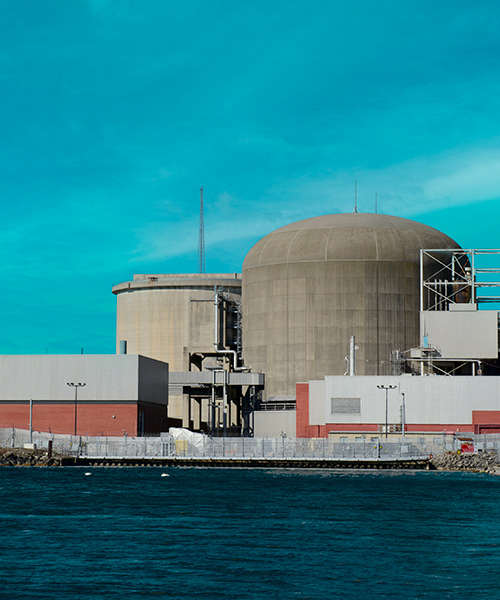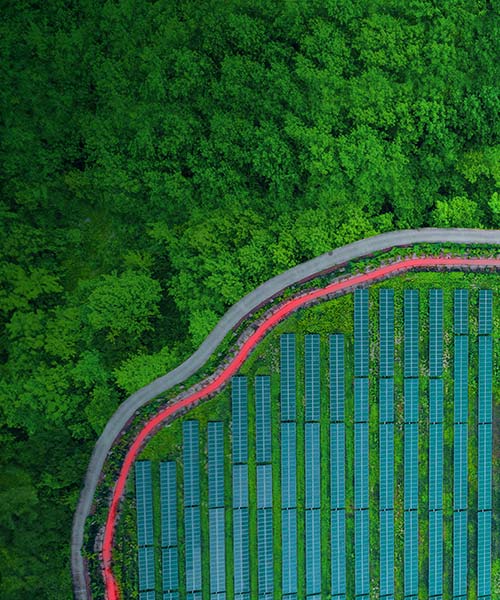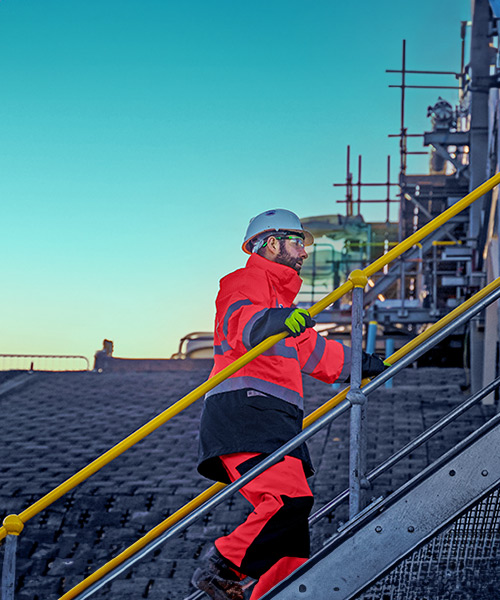August 31, 2022 • 4 min read
Nuclear power: what you need to know
Why nuclear power is a critical energy source in a decarbonizing world
Imagine if we could find an abundant, CO2 free, form of energy to safely power our homes and businesses every hour of every day.
This energy source already exists. It’s called nuclear power.
Nuclear power already makes a significant contribution to electricity generation, providing about 11 percent of global electricity supply. There are 439 nuclear reactors in operation in 32 countries, with a combined capacity of 390 GW (IAEA).
Nuclear power is often overlooked in discussions about decarbonization and sustainability. However, it’s currently the second largest lower carbon energy source in the world after hydroelectricity. And it supplies lower carbon energy to millions of homes across five continents.
What is nuclear power?
Nuclear power comes from converting the energy from a chemical element called uranium into electricity. It emerged as a new approach to meet growing electricity demand in the 20th century, and the technology continues to evolve today.
Nuclear power is an alternative to electricity generated from fossil fuels. The output of a nuclear power station consistent, with similar characteristics to coal- and gas-fired power stations. However, nuclear power plants produce no greenhouse gas emissions during operation.
Nuclear power technologies are operational around the world, including in the Americas, Europe, Asia, and Africa. The USA currently produces the most nuclear power. However, nearly all the current growth in nuclear power capacity is coming from China and Russia.
How does nuclear power work?
A nuclear reactor produces heat to generate steam. Unlike in a coal- or gas-fired station, in a nuclear power plant, the energy to produce this steam comes from uranium. Inside a nuclear reactor, a process called nuclear fission splits uranium atoms. This process generates heat, which turns water into steam, generating electricity in a turbine generator without emitting any CO2.
The by-product of generating nuclear power from uranium is nuclear waste. Safely storing this material is an important consideration in nuclear power projects. The spent nuclear fuel needs to be cooled down over a long period of time and eventually permanently stored at deep geological repositories or, in some countries, reprocessed into different fuels or products.
What are the advantages of nuclear power?
The primary advantage of nuclear power is it doesn’t emit CO2 at any point in the electricity generation process. This means the technology is well suited to decarbonization targets.
Another advantage of nuclear power is that it can provide baseload electricity and heat 24 hours a day, seven days a week. It’s also a complementary technology to renewable sources of energy, such as wind and solar power, which fluctuate depending on weather conditions. Nuclear power can keep homes and businesses supplied when renewable capacity and energy storage can’t meet all electricity demands.
Additionally, new technological solutions such as advanced and small modular nuclear reactors (SMR), and even micro modular reactors (MMR), could help to reduce financial investment and construction times and bring lower carbon electricity into the grid and decarbonize industrial facilities sooner.
Is nuclear power sustainable?
Generating nuclear power is environmentally sustainable. But like all forms of energy, there are environmental considerations across supply chains. Uranium comes from mining. This means some CO2 emissions are attributable to uranium supply chains. Power generators must also consider the transport and long term storage of nuclear waste in their environmental assessments.
However, generating electricity at a nuclear power station is carbon free. Nuclear power can therefore help to meet decarbonization goals for businesses, heavy industry, and the wider world. And its contribution is about more than just electricity. Nuclear power can help stabilize energy supply during the transition to more renewables, battery storage, and hydrogen.
Nuclear power can also support more sustainable hydrogen production. The electrolysis process requires electricity to separate hydrogen and oxygen from water. When this electricity comes from a nuclear power station, it’s called pink hydrogen. Nuclear power is suited to this application, because electrolyzers require a consistent electricity supply to be efficient.
The future of nuclear power
The IEA forecasts global nuclear power capacity needs to grow by around 20 GW per year to achieve net zero emissions by 2050. And while around 60 new nuclear reactors are under construction globally (World Nuclear Association), this isn’t enough to meet required growth projections.
These projects require us to build new nuclear power capacity and extend the life of existing nuclear power stations through maintenance, component replacement, and license renewal.
Over time, the global approach to nuclear power is also likely to shift to a greater number of smaller nuclear reactors. Although SMRs are currently still in development and their economics are not yet fully proven, many countries have a growing public interest and government support.
The benefits of SMR-based distributed generation and microgrids with tailored cogeneration capabilities – including heat, hydrogen, and desalination – are wide reaching. Most SMRs have inherent safety and waste management advantages, which could also ease licensing and improve social acceptance.
They may also be attractive to countries with no experience with nuclear power, especially those with smaller and less robust electricity grids, due to the overall lower total cost and their simplicity of operation.
Remote off-grid communities, industrial facilities, and traditional utilities are likely to benefit from the deployment of SMRs.
It takes time to design, license, build and commission any new nuclear power plant. That means power generators need to start planning new nuclear plants today, so they’re operational in time to make decarbonization targets a reality.



